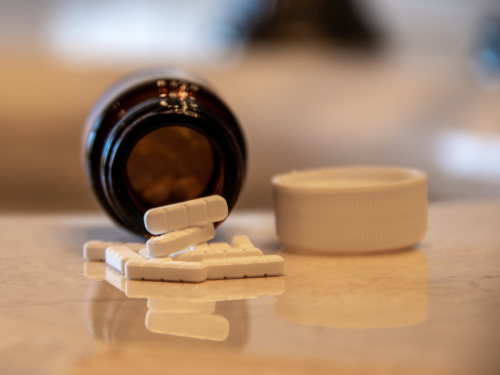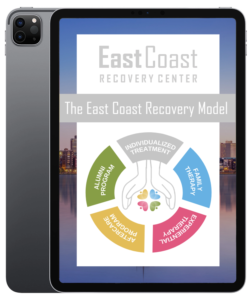To the average reader, cocaine and Xanax might sound like two drugs with very different effects, one notably used at parties, clubs, and social scenes, and the other used on a more personal level by individuals struggling with anxiety and panic disorders. Upon further examination, cocaine stands out as the most abused stimulant in the US, and Xanax is one of the most abused depressants, following alcohol and opioids like heroin and fentanyl. So what brings them together? Why would someone snort cocaine and then take Xanax a few minutes later?
In this article, you’ll learn the difference between cocaine and Xanax, how they’re medically and illicitly used, the dangers of mixing them, and the best addiction treatment options for someone abusing one or more substances.

Difference Between Cocaine & Xanax
- Effects: Cocaine is a central nervous system stimulant, increasing your heart rate, breathing rate, blood pressure, and energy levels by preventing dopamine from leaving the synapse (the gap between brain neurons). Xanax (alprazolam) is a central nervous system depressant that lowers your heart rate, respiratory rate, and energy levels by increasing the amount of GABA* (Gamma-aminobutyric acid), a neurotransmitter that induces sedation and relaxation and lowers fight-or-flight responses.
- Drug class: Cocaine is a Schedule II illicit substance, falling under the same class as methadone, oxycodone, fentanyl, and other drugs that have a high potential for abuse and addiction but still maintain some form of medical use. Xanax is a Schedule IV substance and benzodiazepine, falling under the same class as Ativan, Valium, Halcion, and other substances that have a low risk of abuse and dependence and maintain multiple medical uses.
- Use: SAMHSA’s National Survey on Drug Use and Health reported that 5.2 million Americans used cocaine and 4.8 million people misused prescription tranquilizers and sedatives in 2022. While cocaine is never prescribed to individuals without immediate medical supervision, Xanax prescriptions are at an all-time high, with over 16.7 million prescriptions dispensed to over 3.6 million Americans in 2020.
*An error in GABA signaling has been linked to various neurologic and psychiatric disorders.

How Is Cocaine Typically Used?
There are two ways cocaine is typically used: under medical supervision for very specific applications and illicitly.
Medical use of cocaine
Ears, nose, and throat (ENT) specialists may use cocaine hydrochloride (its medical name) as a topical agent to help numb oral, laryngeal, and nasal cavities before surgical procedures. Due to its ability to constrict blood vessels, doctors might use cocaine to reduce, control, and avoid excessive bleeding during surgery. It can also be used to diagnose and treat bleeding disorders in nasal passages, such as epistaxis, where it can be hard to identify the source of bleeding.
These non-FDA-approved topical solutions are required to be administered by medical professionals and contain 4% cocaine, compared to cocaine sold on the street, containing anywhere between 40 and 60%.
The most common side effects of medically used cocaine include temporary numbness, tingling, burning sensation, impaired wound healing, reduced blood flow, and, in rare cases, allergic reactions, such as skin rashes, itching, swelling, and difficulty breathing.
Illicit use of cocaine
Cocaine sold on the street is typically divided into lines and snorted (insufflation), rubbed into the gums, diluted with water and injected into the bloodstream, or smoked if in its rock form, also known as crack cocaine. Side effects of street-sold cocaine typically include an intense comedown (crash), irregular heartbeat, stroke, seizure, and death.
Side effects induced by both medical and illegal cocaine include increased heart rate, blood pressure, and myocardial contractility (the heart struggles to contract), which can lead to a higher demand for oxygen by the heart and angina (chest pain).
Read more about cocaine: What Is Cocaine Cut With? Additives, Side Effects, & Harm Reduction

How Is Xanax Typically Used?
While Xanax is only available through prescription, some individuals may obtain benzodiazepines through “doctor shopping” (visiting more than one physician to receive multiple prescription medications) or from street dealers, friends, and anyone else willing to sell them their prescription drugs.
Medical use of Xanax
Xanax (alprazolam) is a short-term medication used to treat anxiety disorders, panic disorders, and anxiety caused by depression. These emotions can make daily life difficult, inducing fear, helplessness, and embarrassment during regular, daily activities. Xanax is typically available as immediate and extended-release tablets, orally disintegrating tablets, and a concentrated liquid solution.
Side effects of Xanax include drowsiness, lightheadedness, weak or shallow breathing, seizures, hallucinations, lowered inhibitions, increased energy, trouble sleeping, racing thoughts, agitation, double vision, and jaundice. Older adults have been known to experience extreme levels of drowsiness and dizziness that last longer than usual.
Illicit use of Xanax
Some individuals might abuse Xanax to relieve anxiety or insomnia and enjoy the feelings of euphoria and relaxation. Common ways people misuse Xanax prescriptions include:
- Taking more than their directed dosage.
- Crushing and snorting their pills to achieve a faster “high.”
- Dissolving it in water and injecting the solution into their bloodstream which produces longer-lasting effects.
However, these methods can induce side effects much worse than when taken as directed. Some of these side effects include insomnia, memory problems, poor coordination, impaired motor skills, nausea, vomiting, seizures, and death.
Read more Xanax abuse: Do You Have a Xanax Addiction? How to Find Out
Dangers Of Mixing Cocaine and Xanax
If someone is mixing cocaine and Xanax, chances are they’re taking Xanax after they’ve had cocaine. Stimulants, or “uppers,” induce euphoria and heightened levels of energy but exert dramatic levels of physical and mental stress on the brain. You can picture these effects as a rollercoaster. Cocaine will take your mood to the top of the track before suddenly dropping down (crashing) once its effects fade, and your brain won’t catch the fall.
To avoid irritability, paranoia, and an unpleasant crash, users might take “downers” like Xanax or cannabis to ease cocaine’s offset. Other individuals might crush Xanax and mix it into their cocaine powder to induce both effects at once.
Because of their opposite effects, combining cocaine and Xanax can mask, enhance, and worsen the effects of each other. Some individuals may not feel as high as usual and falsely believe they can have more cocaine or Xanax than before. For example, a cocaine overdose can cause elevated body temperature, rapid heart rate, sweating, and tremors, which are the same symptoms Xanax was designed to minimize and vice versa.
Cocaine And Xanax Addiction In Boston, MA
Abusing two or more substances at the same time, including cocaine and Xanax, can lead to polysubstance dependence, where the body has become acclimated to their effects and will experience withdrawal symptoms if an individual suddenly quits using them.
One of the biggest withdrawal symptoms includes cravings, where an individual might feel an extreme physical and psychological drive to consume more cocaine and Xanax. This can cause them to neglect their family, friends, career, academic plan, and personal goals. Catching substance abuse early can help someone realize they have an Xanax and cocaine use issue, but it’ll take professional addiction treatment to help someone who can’t quit on their own.
If you or someone you know is abusing cocaine and Xanax, contact East Coast Recovery Center in Boston, Massachusetts. Our addiction treatment center is trained in treating polysubstance abuse and dependence using evidence-based therapy methods, holistic healing modalities, and patient-centered and trauma-informed care. We offer several levels of treatment, including partial hospitalization and intensive outpatient programs.
As part of Health Care Alliance North America, East Coast Recovery admissions agents can direct you to a program that fits your needs, including residential and PHP programs in Tennessee and outpatient and detox programs in North Carolina. Call today, and one of our admissions agents can help you get started.











